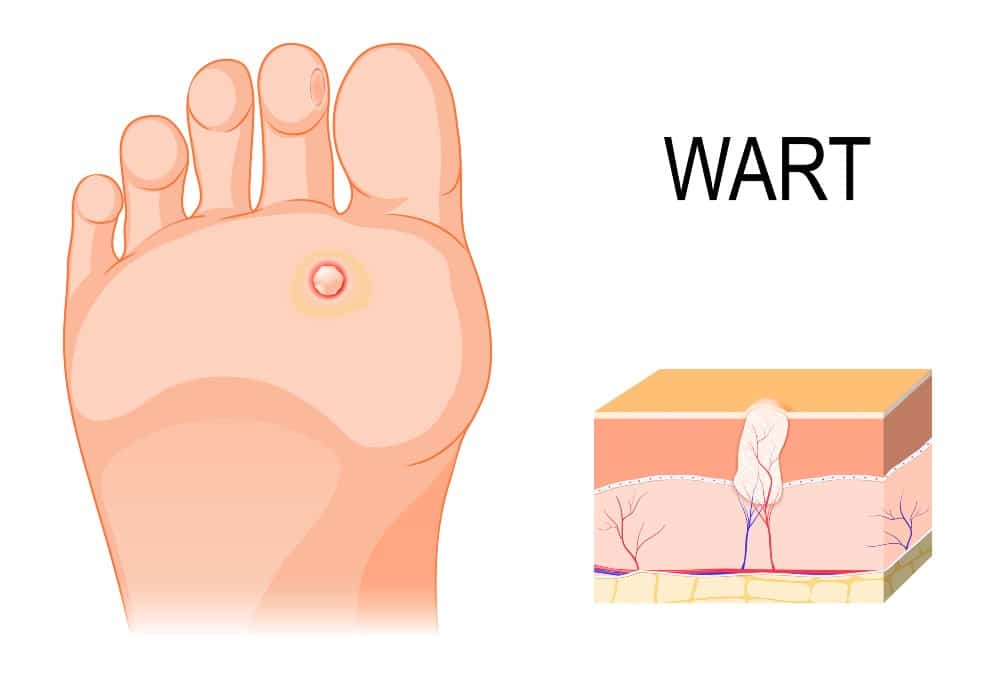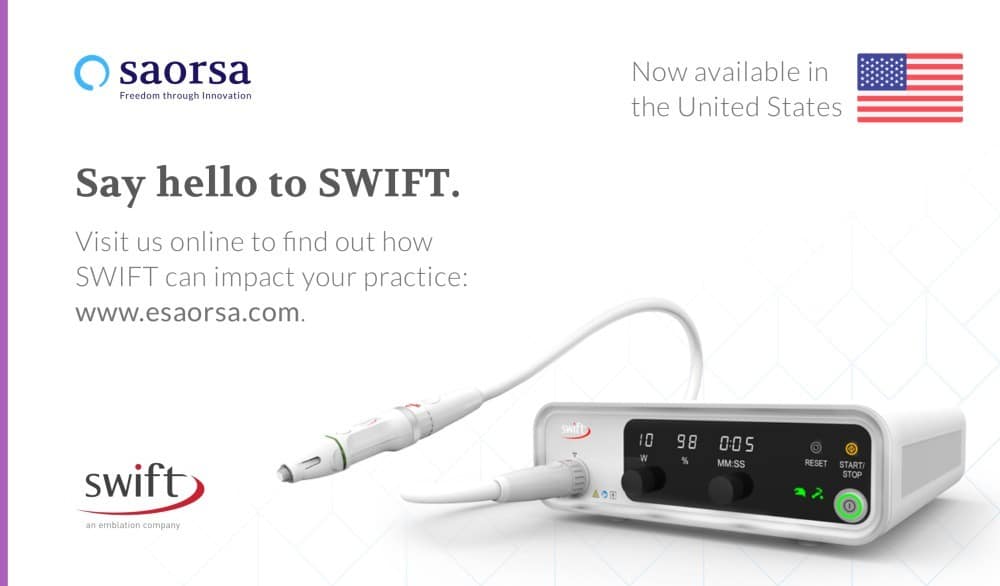Plantar Warts
Plantar warts, which are sometimes referred to as verrucae plantaris, are a type of lesion that can develop on the foot. They are usually located on the bottom of the foot. These growths are composed of an abnormal collection of cells within the epidermis.
Plantar warts are commonly associated with HPV (human papillomavirus) and are thought to be caused by coming into contact with the virus, either through direct contact or indirectly. The virus enters the body through tiny cuts or breaks in the skin and then begins to multiply.
Plantar warts are more likely to develop in areas of high traffic where people are constantly walking barefoot, such as public showers, locker rooms, or pool areas.
These are more likely to occur in people with weakened immune systems or in those who have had warts in the past.

What Are The Symptoms Of Plantar Warts?
Although plantar warts can technically develop on any part of the foot, they’re most common on its bottom. They resemble thickened, calloused skin and often have a small, black dot in the center. This is a cluster of blood vessels that have grown in response to the HPV infection.
Plantar warts can be painful when they develop on weight-bearing areas of the foot. Walking or standing can put pressure on the wart and cause it to ache. The pressure can also cause the wart to grow deeper into the skin, which can make it even more painful.
Although they’re not usually a serious health concern, plantar warts can be difficult to get rid of and may come back even after treatment. If you think you have a plantar wart, it’s important to come and see Dr. Timson so that you can get an accurate diagnosis and appropriate treatment.
Treatment For Plantar Warts
Plantar warts are usually diagnosed based on their appearance. Dr. Timson will ask about your medical history and do a physical examination of the wart. He may also order a biopsy, which involves removing a small piece of the wart for laboratory testing.
Once plantar warts have been diagnosed, there are several different treatment options available.
Over-the-counter medications: Many topical treatments can be purchased without a prescription that may help to get rid of plantar warts. These include salicylic acid, which is applied to the wart and helps to break down the keratin that makes up the lesion. The main problem with these treatments is the fact that they’re more or less mitigatory, and don’t always prevent warts from redeveloping.
Cantharidin: This is a chemical that is applied to the wart and causes it to blister. The blister then pulls the wart away from the skin and eventually falls off. Again, this isn’t guaranteed to completely remove the wart and may need to be repeated a few times.
Cryotherapy: This involves using extreme cold (usually liquid nitrogen) to freeze and kill the tissue of the wart. It’s a fairly effective treatment, but can be painful and may cause blistering or scarring.
Surgery: In some cases, surgery may be necessary to remove plantar warts. This is usually only done if other treatments have been unsuccessful.
However, there is now another treatment available.

Swift Microwave Therapy
A new, non-invasive approach to treating plantar warts, Swift Microwave Therapy is an ideal solution for those who want to avoid the drawbacks of other treatment options.
It works via an energy-based system that generates microwaves through a unique, compact applicator. The microwaves work to target and heat the wart tissue, which then triggers your immune system to notice the wart, fight it, and kill it.
This treatment takes 1 to 3 sessions, spaced out 30 days apart to give your immune system time to fight the virus.
The main advantage of Swift Microwave Therapy is that it’s quick and has a very high success rate. In addition, there is no risk of scarring or blistering and the treatment effectively prevents warts from coming back.
What To Expect In A Treatment Session
During your treatment session, Dr. Timson will start by thoroughly cleaning the area around the wart.
The applicator is then placed on the wart and the microwaves are turned on. You may feel a warm sensation as the microwaves work to heat the wart tissue. The application only lasts for a few seconds with each wart. Afterward, the area is cleaned once again.
And that is it for each treatment! There is no post-op or need to stay off your feet for the rest of the day! There will be no cuts, scars, blisters, or burns on your feet due to the Swift treatment.
Contact Us Today!
Your feet are the primary means through which you explore the world around you. It’s up to you whether or not they make it easy.
If you’re dealing with plantar warts, don’t wait any longer to seek treatment. Swift Microwave Therapy offers a quick, painless, and highly effective solution that will help you get back on your feet in no time.
For more information or to book an appointment, contact us today!
McPherson Office
316 W. 4th Street
McPherson, KS 67460
P: (620) 241-3313
F: (620) 241-6967
© Community Foot Clinic of McPherson. All Rights Reserved.
Privacy Policy | Terms & Conditions
Web Design by CP Solutions
Marketed by VMD Services
